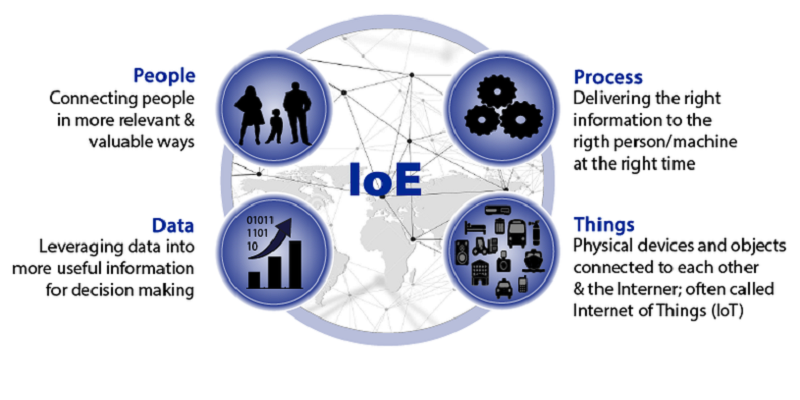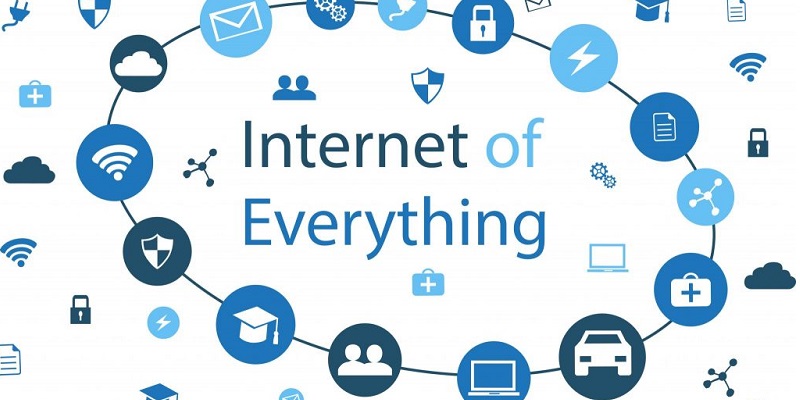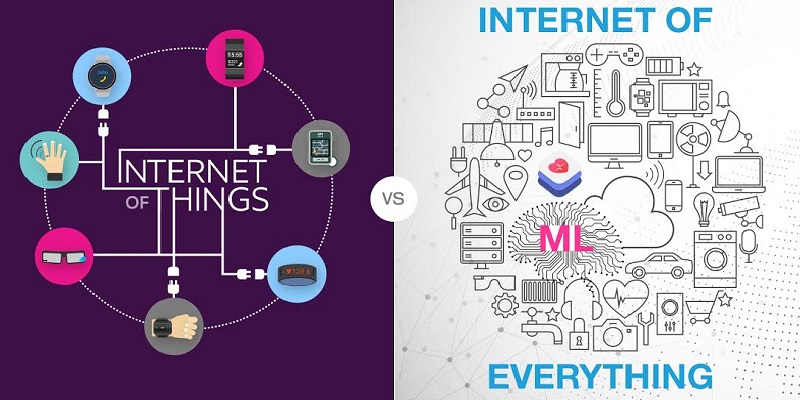Introduction to the Internet of Everything
Thanks to the Internet of Things, today, we can now get things done without necessarily requiring human input. Automation has been made real and practical, making everything flow with relative ease. Well, the Internet of Everything uses the same concept but collaborates with communications and interactions to network all devices globally. It includes an intelligent connection of people, data, processes, and things. Thanks to will further expand the concept of Machine to Machine communication, Machine to People communication, and an advanced technology-assisted People to People interaction. Overall, it will change how we live, interact with others, and even incorporate it into our professional jobs. The industrial sectors will develop at a whole new level. So lest’s move to introduction to the internet of everything.

In simpler terms, billions of objects will use proprietary and standard protocols connected in a private or public network to measure their status using sensors. Additionally, they will use that connection to communicate with other users, devices, and other devices online. Each device will give its own unique identity to facilitate communication.
What are the pillars of the Internet of Everything?
So the simplest introduction to the Internet of Everything:
People: People and their intelligence will probably connect in a more valuable and relevant way.
Processes: Delivering information securely at the right time and to the right person.
Data: It will convert data to intelligence to aid in making better decisions.
Things: physical objects will have an internet connection and will communicate with each other to make intelligent decisions.
Internet of Everything IoE Devices
These are devices with software that allows them to sense data around them, communicate with each other, and send the information to a secure internet connection. Their overall aim is to make tasks and the world more simple and integrated. The common ones include:
Smartphones
Smartphones are definitely the ultimate devices. They mostly use the Internet of Everything concept. They can connect to the internet from almost anywhere in the world. Also, they have a whole range of functions such as media playing, camera, telephone, touch screen computers, GPS receivers, and so on. In addition, they have unique features like Bluetooth, Wi-Fi, and near field communications (NFC) in terms of communicating with each other. Some even have features that enable them to sense and communicate with people.

Smartwatches
A smartwatch has features that enable it to create a connection between a person and their smartphones. It can give a message and call alerts and access some applications on the phone. Additionally, they have a pedometer to count steps and monitor heart rate, making it easier for the owner to track their health.
Google glass
Google Glass is a wearable computing device that displays information to the person, just like in the case of a fighter pilot. Also, the glasses have a tiny screen to communicate information and a touchpad that allows the wearer to navigate menus while still looking at the Google glass.
Tablets
Like smartphones, tablets can connect to the internet but have a larger screen that enables them to read magazines and watch videos with ease. They can also connect with other devices, and their applications are almost similar to what you can access on the computer.
IoT and IoE
Differences
The Internet of Things only has one pillar of things. It solely focuses on the physical objects connected to the internet. With that connection, they can sense and communicate to alter how decisions are made. On the other hand, the Internet of Everything has four pillars. For example, these are people, data, processes, and things. Also, they all work together to improve industry and business outcomes and improve people’s overall lives because they add to what the Internet of Things provides.

Similarities
• Security issues: In both, devices are connected to communicate. This makes the distributed systems more vulnerable to cyber-attacks and external penetration. The more they connect, the higher the chances of breaches.
• Decentralization: Both are not centralized. Moreover, nodes work independently to perform tasks, each as small management centers.
So this is a small introduction to the Internet of Everything. In conclusion, every day, progress making the Internet of Everything better and more successful. Moreover, appliances and hardware pieces are growing and becoming to be more intelligent. The municipalities can adopt smart electricity and water meters while manufacturing industries can have sensors to monitor equipment and eliminate fixing costs. Overall, the whole concept of smart things will change how we do business and improve products.